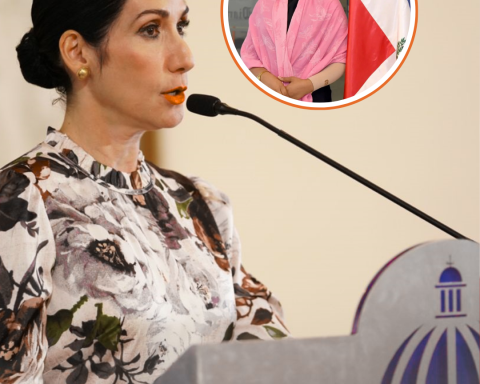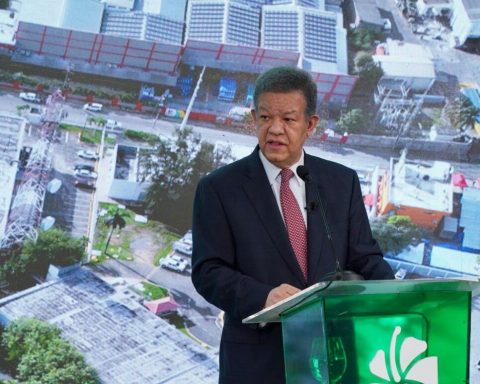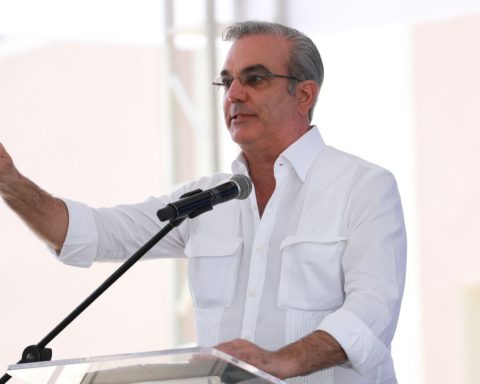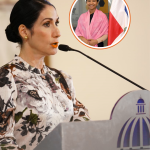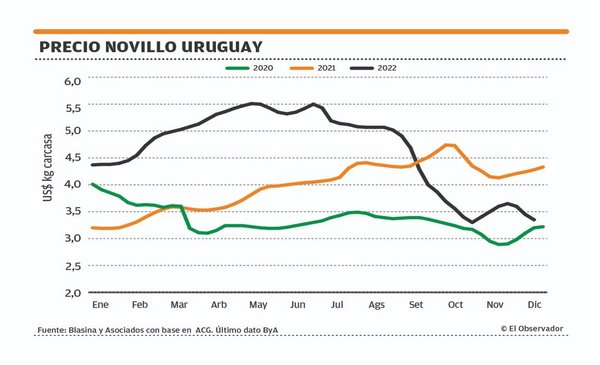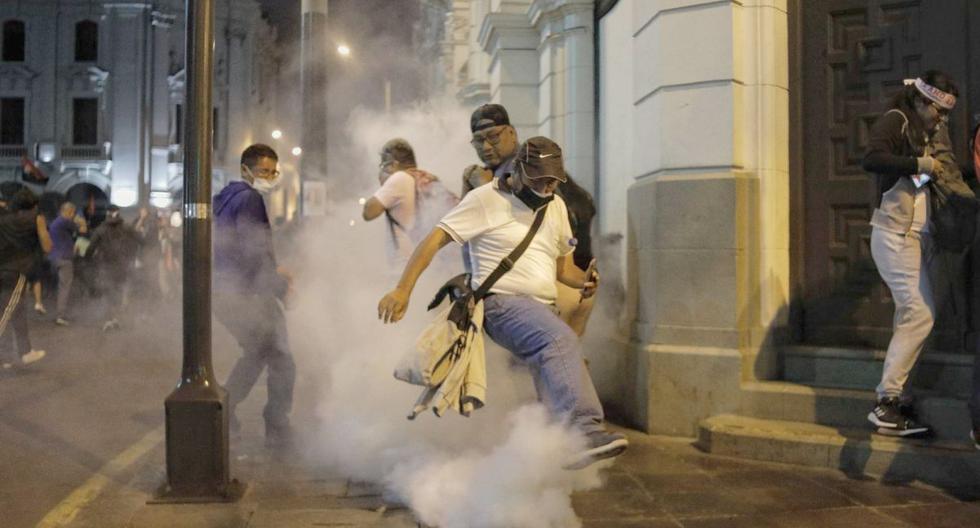When the history of the cause of the Dominican budget expansion is written, which in the last four proposals register 13-digit amounts, the covid-19 health crisis will have an important share in the establishment of the “era of billionaire budgets.”
The arrival of the pandemic upset public finances in such a way that in the first quarter of the virus circulation alone, budget spending represented 1.1 percent of the gross domestic product (GDP) and began an accelerated annual increase in the General State Budget. , driven by public debt.
In the last decade, the amount of the PGE has almost tripled, and the greatest expansion occurred as of 2020, the fiscal period in which for the first time Dominican public finances ended up passing 12 digits, to incorporate the term trillion pesos, which It is when the numbers arrive or pass a billion.
In 2020, the period of the change of State administration, as a result of the extraordinary spending demanded by the pandemic, it was necessary to present two complementary budgets. The first in June, by the administration that ceased in August of that year and the second in November, proposed by the management that was installed on August 16 of that year.
These changes directly affected the size and composition of the PGE, which was originally presented with an amount of expenses, not including payments for debt amortization and reduction of liabilities, amounting to RD$861,074.37 million. In the first reformulation, the amount was raised to RD$906,702 million and in the second it crossed the trillion barrier, standing at RD$1,029,060 million.
Other budget components that were impacted by the two supplementary budgets for 2020 were total revenue, the amount of financing, the projected deficit, and public debt amortization payments. In the case of income, the Government was forced to reestimate it downwards, falling from RD$673,107.8 million in the first complementary project to RD$610,362.6 million in the second.
The fiscal deficit went from RD$110,251.02 million in the original budget to RD$233,595 million in the first supplementary budget, to skyrocket to RD$418,698 million in the second re-estimate.
Meanwhile, the financing needs for 2020 went from 246,295.82 million in the original project, in the first complementary project it rose to RD$397,204 million and in the second to RD$599,525.4 million.
Financing ended up representing 44.6 percent of the 2020 Budget, a period that marked the beginning of a greater weighting of budget financing via public debt. Although with a growing trend, the indebtedness was, of the total budget, around 20 percent.
The year 2020 also broke the trend of vegetative growth of the General State Budget, which was proportional to the expansion of the current product (real GDP plus inflation).
This trend has been maintained since 2013, the year in which a budget was presented with a total expenditure of RD$454,727.2 million plus RD$76,119.1 million for public debt repayments. 2013 was the first general budget of the State designed free of limits referred to by the International Monetary Fund (IMF), a multilateral organization with which the country had an extended facility agreement since 2009, for more than US$2,000 million.
As a result of this agreement, the 2012 Budget project, designed by the administration that concluded on August 16 of that year, had compliance commitments, and this was stated in the definition of its budget policy of the PGE 2021.
“The Government, committed to the fiscal goals agreed with the International Monetary Fund (IMF), has taken a series of measures to improve fiscal administration and tax policy, in an attempt to generate additional income, with the purpose of continuing to maintain development economic stability”, said then the General Directorate of Budget (Digepres).
For the year 2012, an adjustment of 0.7 percentage point was contemplated in the fiscal balance of the Central Government, which would reach a deficit of RD$22,443.7 million, corresponding to 0.9% of Nominal GDP.
The agreement with the IMF fell through in the first quarter of 2012 with a tranche to be fulfilled and US$500 million to be disbursed. The issue of the electricity tariff, to which the Government at that time refused to apply a third increase within the agreement period, was the cause of the agreement’s interruption. At the end of the year, the budget registered a large fiscal deficit, which at that time was fixed at around RD$87 billion.
For the 2013 Budget corresponding to the first designed by the administration that took office on August 16, 2012, the Government had a tax reform, which among other things broadened the base and rate of the ITBIS. This allowed him to put his “budget stamp” that for the first year of design based the budget policy on five fundamental pillars: (i) basic education and training of human capital for productive modernization, by increasing spending on pre-university education, education higher, technical and vocational education; (ii) increasing the quality of life of the most vulnerable population by reinforcing actions in the health sector, social security, and protection programs for the
vulnerable population; (iii) maintenance of macroeconomic stability and the investment climate; (iv) the promotion of productive activities and job creation through economic revitalization, particularly in the agricultural, tourism, micro, small, and medium-sized business sectors; and, (v) the strengthening of citizen security.
The 2013 Budget was prepared with the firm purpose of guaranteeing the sustainability of the fiscal accounts and the maintenance of macroeconomic stability, prioritizing the Education, Health, Social Security, Tourism and Agriculture sectors, with rationality and austerity criteria, said then the Digepres.
Meanwhile, the administration that was installed in August 2020, in the midst of the pandemic, showed its budget model in the 2021 General State Budget project, which represented “the strategic commitment of the new government administration with economic recovery and the start of overcoming the health crisis resulting from the aforementioned pandemic. The spending priorities are based on the idea that development is not a personal adventure, identifying a set of sectoral policies with a direct impact on people’s quality of life, consistent with the 2020-2024 Government Plan and the Strategic Guidelines formulation of the National Multiannual Plan for the Public Sector 2021-2024. In the midst of the adversities represented by the context of COVID-19, the new government administration is committed to relaunching the economy, creating jobs, supporting agricultural production, social protection policies for the most impoverished population, the guarantee of the right to health, the universalization of social security for the entire population, the unavoidable commitment to quality public education, the right to water and decent housing in safe environments, among other sectoral policies”.
The Digepres highlighted that “the budgetary policy for the year 2021 has been prepared foreseeing the set of strategies aimed at recovering the State’s revenue adequacy and increasing tax revenues that allow the development of the aforementioned spending interventions. In this new version, all the transitory tax measures introduced in the initial version of last October 1 are withdrawn. For its part, the new administration is committed to guaranteeing the sustainability of public finances through responsible management of the financing policy, maintaining a balanced debt portfolio, reducing the main risks, in terms of reducing the percentage of debt in foreign currency. , at variable interest rates and improving the maturity profile of the debt”.
In terms of amount, the 2021 Budget retained the 13-digit status, concluding with a value of RD$1,037,842,322,704. For that year, the amount approved for debt amortization, which is a consolidated part of the general level of expenditure for the period, was RD$146,463 million. In the current 2022, the amount of the Budget is RD$1,214,606,007,369.
And for 2023, the approved PGE has a global amount of RD$1,479,119,199,771. That figure, only in the component of the last 12 digits, without incorporating the trillion pesos, is higher than the 2012 budget.

